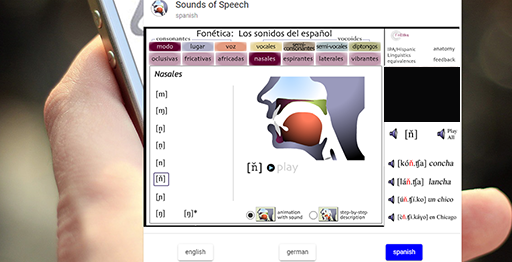3.1 Nasal assimilation
Nasals in pre-consonantal position, that is in syllable-coda (both within the word and across word-boundary), assimilate to the place of articulation of the following consonant.
- A nasal before a bilabial sound /p/ or /b/ is pronounced bilabial [m]; ambos (both), u[m] beso (a kiss). It’s worth pointing out that the orthographic sequence -nv- also represents phonetic [mb] as in convertir [kombeɾˈtiɾ], invitar [imbiˈtaɾ].
- Before labiodental f, the nasal becomes labiodental [ɱ] énfasis (emphasis).
- Before dentals, the nasal is pronounced dental [n̪], cantar (to sing). It sounds very similar to alveolar n, but the tip of the tongue touches the back of the front teeth, just like when pronouncing [t] or [d].
- Before palato-alveolars and palatals, the nasal is palatalised [nj]; ancho (wide), cónyuge (spouse). Note that it is not identical to the platal nasal ñ. (On the Sounds of Speechsite, this nasal is represented as [ň]).
- Before velars, we pronounce a velar nasal; [ŋ] – manga (sleeve), ángel (angel).

Preconsonantal nasal allophones. Source: Sounds of Speech https://soundsofspeech.uiowa.edu/ main/ spanish [Tip: hold Ctrl and click a link to open it in a new tab. (Hide tip)]
